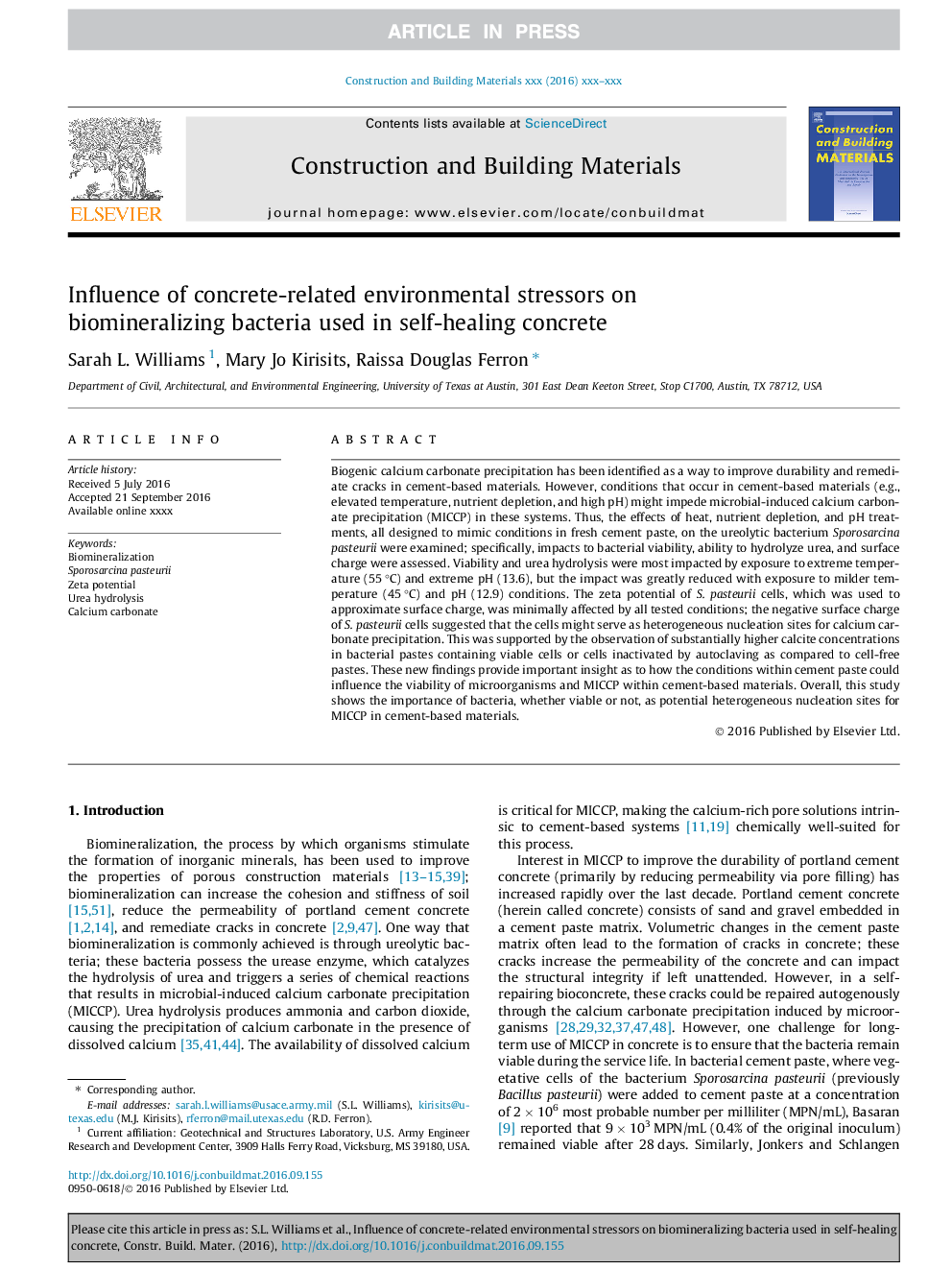| Article ID | Journal | Published Year | Pages | File Type |
|---|---|---|---|---|
| 4913531 | Construction and Building Materials | 2017 | 8 Pages |
Abstract
Biogenic calcium carbonate precipitation has been identified as a way to improve durability and remediate cracks in cement-based materials. However, conditions that occur in cement-based materials (e.g., elevated temperature, nutrient depletion, and high pH) might impede microbial-induced calcium carbonate precipitation (MICCP) in these systems. Thus, the effects of heat, nutrient depletion, and pH treatments, all designed to mimic conditions in fresh cement paste, on the ureolytic bacterium Sporosarcina pasteurii were examined; specifically, impacts to bacterial viability, ability to hydrolyze urea, and surface charge were assessed. Viability and urea hydrolysis were most impacted by exposure to extreme temperature (55 °C) and extreme pH (13.6), but the impact was greatly reduced with exposure to milder temperature (45 °C) and pH (12.9) conditions. The zeta potential of S. pasteurii cells, which was used to approximate surface charge, was minimally affected by all tested conditions; the negative surface charge of S. pasteurii cells suggested that the cells might serve as heterogeneous nucleation sites for calcium carbonate precipitation. This was supported by the observation of substantially higher calcite concentrations in bacterial pastes containing viable cells or cells inactivated by autoclaving as compared to cell-free pastes. These new findings provide important insight as to how the conditions within cement paste could influence the viability of microorganisms and MICCP within cement-based materials. Overall, this study shows the importance of bacteria, whether viable or not, as potential heterogeneous nucleation sites for MICCP in cement-based materials.
Related Topics
Physical Sciences and Engineering
Engineering
Civil and Structural Engineering
Authors
Sarah L. Williams, Mary Jo Kirisits, Raissa Douglas Ferron,
